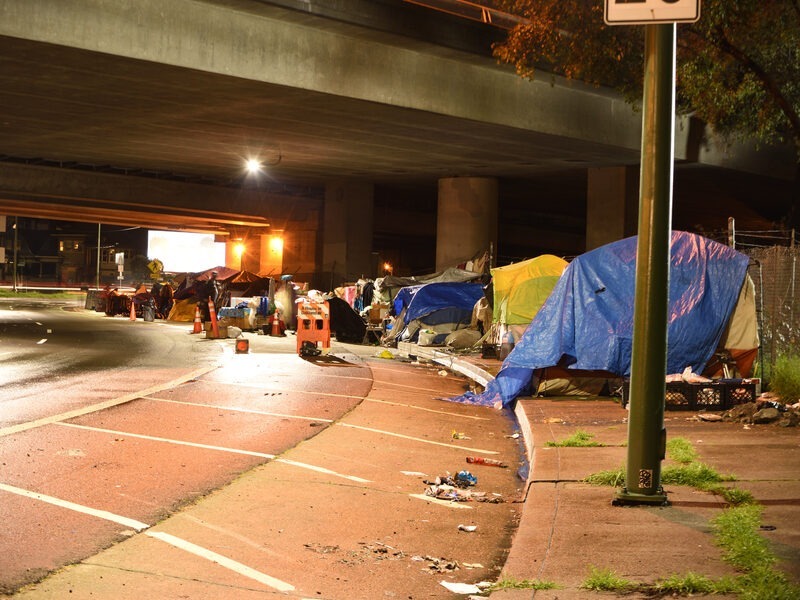Unsheltered homelessness is highly visible, and presents social, political, health, and safety challenges. This reality creates a conundrum: housing — access to stable, affordable housing and necessary social and medical services — is the only successful way to end homelessness.
Yet, in the face of rising unsheltered homelessness, local leaders often experience pressure to respond to health and safety concerns related to unsheltered homelessness through alternative city agencies, like sanitation departments.
They may deploy more enforcement strategies such as:
- encampment clearance without adequate notice or housing being available
- property confiscation
- relocation of unhoused people
- and waste removal.
While unsheltered homelessness presents many distinct challenges, including threats to public and individual health and safety, encampment clearance without providing housing options for residents does not end homelessness.
This policy brief investigates the involvement of sanitation agencies in response to homelessness in cities across the country.
We amass a wide array of data, including details of the roles of Departments of Public Works, Sanitation, and/or Waste Management Departments in response to homelessness from the nation’s 100 largest cities.
The brief finds that sanitation agencies are frequently involved in implementing city responses to homelessness. Additionally, such responses are most often distinct, or isolated from, primary municipal homeless policies such as homeless plans. Findings include:
- 72% of municipalities enlist sanitation institutions as a part of their response to homelessness.
- 50% of sanitation policies involve the police. In America’s 50 largest cities, 68% of sanitation responses involve police.
- Of the 100 largest cities, the majority of sanitation strategies target encampment abatement (63%), including property confiscation, and physical removal of unhoused individuals from areas. 90% of the 50 largest cities describe encampment abatement as the primary goal of sanitation responses to homelessness.
- Nearly half (41%) of sanitation strategies in the 100 largest cities include coordinating referrals to social or medical services. However, efforts where sanitation strategies link back to any type of shelter — permanent or temporary — occur in just one in 10 municipalities’ sanitation responses.
To address this issue effectively, there needs to be better coordination between sanitation agencies, homeless services, and housing departments. The federal government should incentivize cities to adopt policies that emphasize long-term housing solutions over short-term punitive measures.
Recommendations:
- Federal Financial Incentives: Provide financial incentives for encampment removal only when long-term housing solutions are available.
- Integrated Policy Design: Encourage local sanitation agencies to collaborate with homeless and housing departments when creating and implementing policies.
- Resource Strengthening: Increase resources from federal, state, and local governments to enhance the capacity of housing and homeless departments to invest in evidence-based solutions.
By focusing on these recommendations, cities can develop more effective, humane responses to homelessness that address the root causes rather than merely the symptoms.




